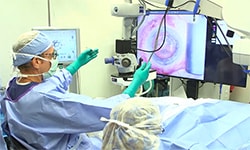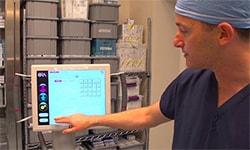Editorially Independent Content
When effectively utilized, data can guide you to tighten processes, customize services, better understand the needs of your patients, and even detect fraudulent activity in your practice. Here are 5 ways you can get started.
1. Automated collection of electronic health record (EHR) data. Most practices have invested time and money in extracting data from EHR systems. Marketing, accounting, and IT staff spend a lot of their time—in some cases up to 50% of it—extracting and analyzing this data to better understand their business. That’s time not spent marketing, optimizing the books, or building better systems for you. Key to controlling this waste is the automated collection and presentation of this data so that you can see the information that matters each day you come into the office, and your teams can focus on actively growing the business rather than creating reports.
2. Ad hoc trend analysis. Are your cash procedures growing? What about different visit types? Is revenue per procedure type increasing or falling? Are new products and or procedures cannibalizing the traditional core of your business? Simple but powerful historical trend analysis can help you spot strengths and weaknesses in your practice well before they become problems. By finding those trends that pose potential issues, you can focus on what will have the most immediate impact on your business and monitor changes real-time.
3. Accounts receivable analysis. Most practice owners know exactly how much unpaid revenue they have, but there are many dimensions to accounts receivable that usually make one number an inadequate indicator. For example, do certain insurers routinely delay payments? Or, are there procedure types or even individual codes that pay faster than others? Are credits and adjustments obscuring problems in your accounts receivable calculation that could be easily addressed? Do cash payments for elective services distort your daily outstanding amount in accounts receivable? With straightforward analytics, you can gain visibility to the money you might be leaving on the table and start dialing for dollars to get it in the door tomorrow.
4. Scheduling optimization. Are you using your physicians’ time wisely? Are some providers booked out for weeks while others are idle? Consider the impact on the bottom line that patient load balancing efforts could have. Could the patient experience be enhanced by offering additional visit types when conditions warrant? Might you be able to predict when this could happen? Examining your scheduling templates with both historical and future-looking lenses is an important tactic for practices to optimize the time providers spend caring for patients. Correcting an imbalance may generate more revenue with less time in the office or in surgery.
5. Fraud detection and intervention. Fraud and embezzlement are uncomfortable topics but ones that deserve more attention. Would you know if someone in your office kept the cash and didn’t post a charge or wrote off the balance without depositing the cash? Your practice management system or EHR data could hold the key to detecting these anomalous transactions—whether they are intentional or not—and elevate them to your attention for further investigation. Without access to and analysis of your data, these potentially costly events stay in the shadows.
You don’t need to build all of these analytics on your practice management or EHR system to realize value from the data that already exists. It’s a process that should show value at each step. You can start small on your journey to practice data analytics, but it’s important to start now.
Michael Isaac is the co-founder of Conclusn, LLC.
Candy Simerson is president and CEO of iCandy Consulting.




